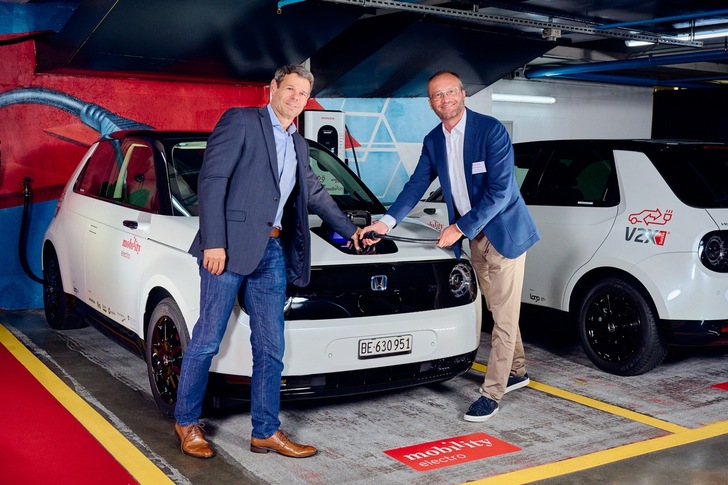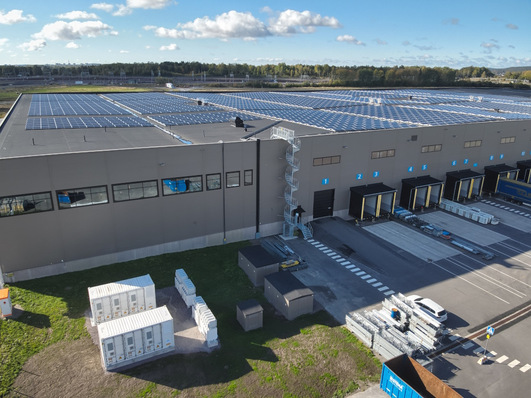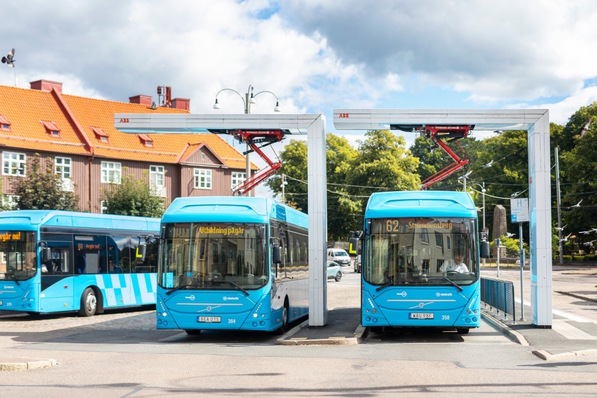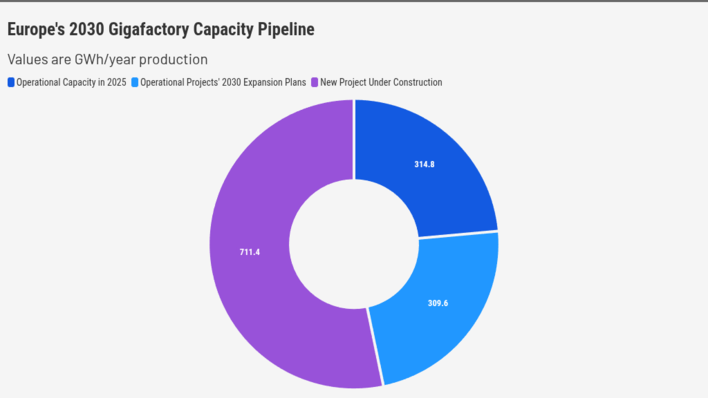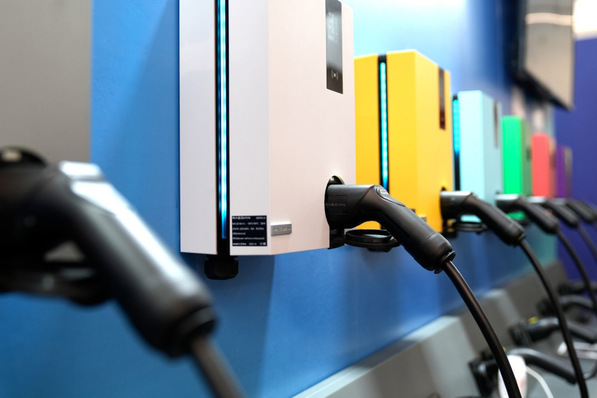The Swiss pilot project "V2X Suisse" was officially launched in. Over the course of a year, the project will investigate how electric vehicles can be used as storage to close electricity gaps and increase grid stability.
Seven companies are behind the project, with the car-sharing company Mobility taking the lead and providing 50 "Honda e" vehicles at 40 locations throughout Switzerland. These electric vehicles feed electricity from their batteries back into the grid when they are not being driven. This is the first large-scale test with bidirectionally charging series electric cars. This enables findings from different conditions - both in rural and urban areas.
Electric mobility as part of the solution
The substantial idea behind V2X and bidirectional charging is that electric vehicles can not only draw electricity, but also give it back. Especially since cars spend an average of 23 hours a day just standing around. The so-called "stationary vehicles" thus become power banks that can be connected together to form a large energy storage facility, similar to a reservoir. In this way, distribution grid operators and households can, so to speak, draw electricity from the electric vehicles at peak times, while they are fully recharged during the day - when the sun is shining - at a cheaper rate.
See also: Feed power back into the grid from the car
The share of electric vehicles on Swiss roads is steadily increasing. On the one hand, electromobility increases the demand for electricity; on the other hand, it can be part of the solution through V2X technology. This promotes general grid stabilisation for both distribution grid operators and swissgrid (national grid operator). In the future, electricity providers will be able to better balance out fluctuations, minimise bottlenecks in the distribution grid, reduce expensive grid expansions and prevent power shortages. The potential is huge, but it must be used more efficiently.
Continuous operation is conceivable
Marco Piffaretti, project manager of "V2X Suisse" and electromobility expert at Mobility, is convinced that the results of the one-year test operation will give V2X technology the necessary boost. "We are gaining the much-needed experience to be able to master the technical and regulatory challenges surrounding bidirectional charging." The project is designed in such a way that, if successful, it can be transferred directly into continuous operation. (mfo)
Also interesting: Clever continues large-scale expansion of Danish charging infrastructure


